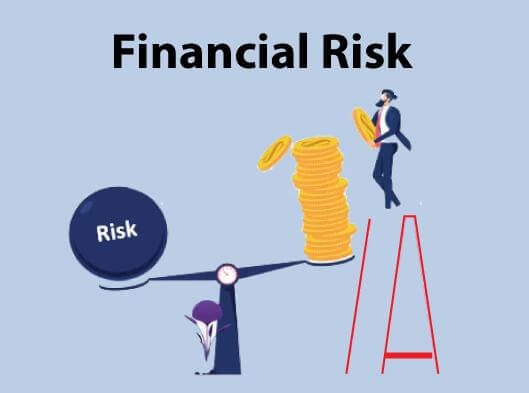Growing a company is not an easy task, you have to carry out a multitude of operations on a day-to-day basis and, in addition, invest. When we want to invest, we will inevitably be willing to take financial risks. This implies having to develop a strategy that helps us not to fail.
The financial markets are full of threats from the constant variables that make it up, that are why we will have to be more careful.
Also, when we talk about investing, we are directly talking about uncertainty that we cannot confuse with risk.
Sometimes the solution is easy and other times not so much. For this reason and if you really want to improve your company’s finances, take note of the following measures that you can take to greatly reduce both the uncertainty and the risk of your operations.
What is a financial risk?
When we speak of risk, we refer to the possibility of an adverse event arising and its consequences for us.
It must be made clear that as this concept is quite broad, we are only going to refer to financial risks, to explain how we can control those financial consequences that are negative for a business.
Types of financial risks
Market risk. Associated with the variations suffered by the financial markets, and in which we can distinguish:
- Exchange risk: will be the consequence of the volatility of the foreign exchange market.
- Interest rate risk: will be the consequence of the volatility of interest rates.
- Market risk: to refer more specifically to the volatility of financial instrument markets such as shares, debt, derivatives, etc.
Credit risk. That which refers to the possibility that one of the parties to a financial contract does not comply with its contractual obligations.
Liquidity or financing risk. It covers the fact that one of the parties to the financial contract cannot obtain the liquidity it needs to assume its obligations despite having assets (which it cannot sell) and the willingness to do so.
Operational risk. The possibility of financial losses, whether due to a failure or inadequacy of processes, people, internal systems, technology, etc.
There are 3 ways to take a risk:
- Transfer the risk: We transfer the risk to another party. By selling that asset or taking out an insurance policy.
- Avoid risk: Simply not expose yourself to the risk that has been identified.
- Retain the risk: We directly assume the risk and we will have to make the decision of how we are going to cover the possible losses.
None of these strategies is more advantageous than the other, everything will depend on the type of activity that we are carrying out and the type of risk to which they are oriented.
How to reduce your financial risk? Control and management.
It is normal if you are an entrepreneur that you try to minimize the risk that your company may run, so as not to find yourself with long-term financial problems.
This is one of the issues that most often concerns entrepreneurs when talking about the livelihood of the company. And we fully understand it because the entire company could collapse just by making one mistake.
It is impossible to completely eliminate the existence of risks, but it is possible to reduce it. For this reason, and going directly to the point, we have made a list, brief but very useful, that will help you, if not to reduce, at least to be able to control and manage the risks that your company runs.
- Evaluate the profitability of each investment. This is something you should never forget. You have to always keep in mind that the more information you have about the operations, the lower the risk.
- Anticipate the future. We know that this is something impossible, but in reference to the previous point, we can get quite close to what can happen later if we have great information to help us compare situations, decision making and strategies.
- Diversify. Something fundamental that can never be missing in any risk control strategy is diversification. We can do this by proposing investments of various types, for example, highly dangerous investments that compensate for others with very low risk. This will make you have a broader investment portfolio and you will be able to obtain better results, in a safer way.
- Evaluate the results obtained. You should not forget this, it is very important that every time you get the results of an operation you study them carefully to analyze what is happening. This can also help us predict the future!
- It has a professional team. Managing your accounts deserves specialized knowledge about new financial trends.
- You can always protect some of your assets by taking out insurance.
- Hedging. Along the same lines as diversification, we can also combine some assets from the same portfolio, with the aim that the variations of some offset those of the rest.
- Set toppings. We refer to those operations that consist of currencies other than the euro, where a variation in the price can surely have a high financial cost.
